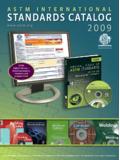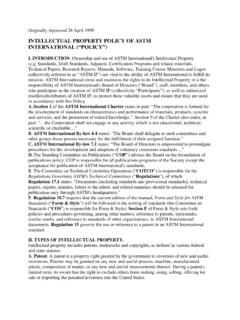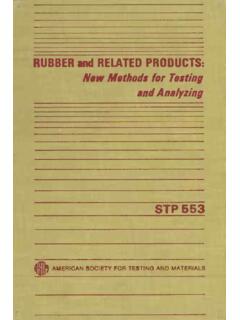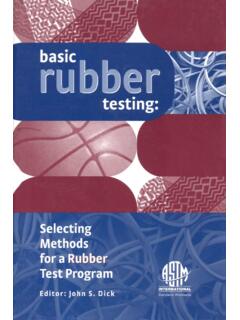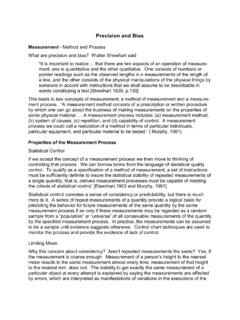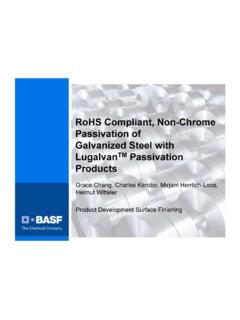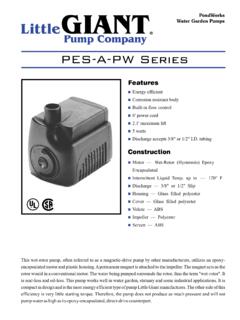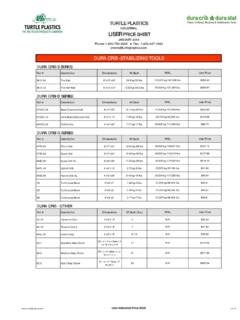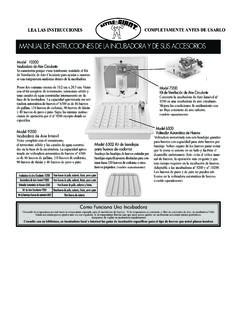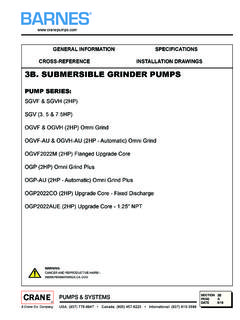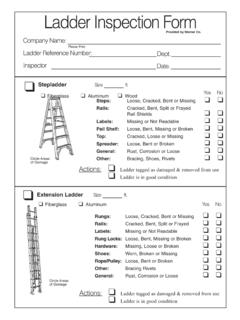Transcription of Final Hist Book - ASTM International
1 ASTM1898- 1998 A century of Progresshis book is dedicated tothe many thousands ofASTM members who, overthe past century , havedeveloped the standardsthat improve the qualityof our StandardsDevelopment and theOrigins of ASTM A Broader physicalcharacteris-tics. The federal governmentalso asked thesteel makers to take a sample from each steel batchwhich was then subjected to a few simple tests determining its tensile strength and elasticity. To perform quality checks, American steel companiesused new testing equipment such as the Riehle steeltester or a version of Tinius Olsen s little giant ,which were used to determine tensile TO STANDARDSP rogress was nevertheless slow.
2 Suppliers in manyindustries such as construction and metallurgyobjected to standard material specifications and test-ing procedures because they feared that strict qualitycontrols would make customers more inclined toreject items and default on contracts. Even in iron andsteel, where quality definitions and standards madegreater headway than in other industries, materialspecifications remained controversial. The ones thatexisted were highly customized and applied only to aspecific order. Industrywide standard specificationswere unheard of, making life difficult for large buy-ers. Without standard specifications, and with eachmill following its own material testing procedures,buyers of industrial products were unable to ensureuniformity and frequently found reason to complainabout the uneven quality of steel rails for railroads.
3 The Pennsylvania Railroad, the largest corporation ofthe 19th century , played a key role in the quest forstandard specifications. Its efforts in this field wereinitiated by Charles Dudley, who received his A. The Tinius Olsen autographic testing machine provided for the firsttime a permanent, easily interpreted record of test results from the startof each test to the Charles Benjamin Dudley, SPECIFICATIONS: A NOVELTY INAMERICAN INDUSTRYOne of the first materials specifications is found in theBook of Genesis: Make thee an ark of gopher wood;rooms shalt thou make in the ark, and shalt pitch itwithin and without with pitch.
4 Prior to the 19th cen-tury industrial revolution, craftsmen told their suppli-ers in similarly basic language what kinds of materialsthey desired. Shipwrights preparing to build a sturdyvessel usually ordered live oak, the toughest hard-wood available in Europe and North America, ratherthan softer white oak, because they knew from expe-rience that live oak was more durable. Craft experi-ence was indeed key because artisans had no instru-ments to measure the tensile strength, chemical com-position, and other characteristics of a given industrial revolution opened a new chapter in thehistory of material specifications.
5 Locomotive builders,steel rail producers, and steam engine builders whoused revolutionary new materials such as Bessemer steel could no longer rely on craft experiences of centuries past. The new materials andtechniques invented during this period required newtechnical expertise. Moreover, manufacturers encoun-tered numerous quality problems in end productssuch as steel rails because suppliers furnished inferiormaterials. American rails were so poorly-made, in fact, that many railroad companies preferred Britishimports, which were moreexpensive but avoid such prob-lems, some manu-facturers issueddetailed descriptionsof material to ensurethat their supplies metcertain quality example, when a fed-eral arsenal ordered gun steelfrom a steel mill, the contract included several pagesof specifications detailing chemical composition and View AB291898A-1 on Steel, Stainless Steel, and Related Alloys1902C-1 on Cement1902B-2 on Nonferrous Metals and Alloys1902D-1 on Paint and Related Coatings.
6 Materials, andApplications1903A-6 on Magnetic Properties1903D-4 on Road and Paving Materials30 A Broader View A. The struggles between early steel makers and corporate consumersover the quality of steel led Charles Dudley to champion the need forstandard material specifications. Photo credit: American Iron and SteelInstitute; Historical FileB. Meeting of the Section on Alloy Steel Forgings of Committee A-1from Yale University in 1874, and who later becamethe driving force behind ASTM. Dudley organized therailroad s new chemistry department, where he inves-tigated the technical properties of oil, paint, steel, andother materials the Pennsylvania Railroad bought inlarge quantities.
7 Based on his research, Dudley issuedstandard material specifications for the company soon realized that he had taken on a formidable task. In 1878, he published his first majorreport, The Chemical Composition and PhysicalProperties of Steel Rails, in which he analyzed thedurability of different types of steel rails. It concludedthat mild steel produced a longer-lasting rail thanhard steel, and Dudley recommended an improvedformula for mild steel for rails to be used by thePennsylvania. Hisreport raised afirestorm amongsteel masters, who disputed itsfindings. Theapplication ofDudley s new formula, theycharged, producedunnecessaryexpenses thatincreased produc-tion costs.
8 Steel producers, determined to keep fullcontrol over output and quality control, viewed standard specifications issued by their customers asunacceptable meddling. Dudley later reported thatsteel companies often told the railroads that if theydid not take the rails offered [by the manufacturers],they would not get any. The disappointing response to his first report reinforced Dudley s resolve to initiate a constructivedialogue between suppliers and their customers. Eachparty had much to learn from the other. Steel makersknew more about practical production issues and theindustry s cost structure than their customers, whilerailroads, locomotive builders, and other users of steel products had better knowledge of amaterial s long-term performance, knowledge thatcould help manufacturers improve the quality of rails,plates, and beams.
9 Dudley concluded that a goodspecification needs both the knowledge of the product s behavior during manufacture andknowledge of those who know its behavior while in service. The introduction of more powerful locomotives,heavier rolling stock, and longer trains gave buyersan additional incentive to work more closely withtheir suppliers. Statistics compiled by railroad engi-neers indicated that the average wheel load of carsincreased 75%, and traffic volume rose more than300% during the late 19th century . Rail manufacturersneeded this kind of data to supply steel that conformed to higher performance standards.
10 But the lack of cooperation between producers and usersof steel rails was an enormous detriment to suchimprovements. THE BIRTH OFCONSENSUSD udley s efforts to find a solution to these seemingly intractableproblems facilitated theformation of ASTM,which was committed to building a consensus onstandards for industrialmaterials. The foundingof the organization in 1898 was preceded by severalkey initiatives that laid the , whose experiences during the 1880s gavehim a better picture of the antagonistic attitudes thatmarred relationships between the PennsylvaniaRailroad and its suppliers, proposed aninnovativesystem committees provided represen-tatives of the main partieswith a forum to discuss every aspect of specificationsand testing procedures for a given material.
